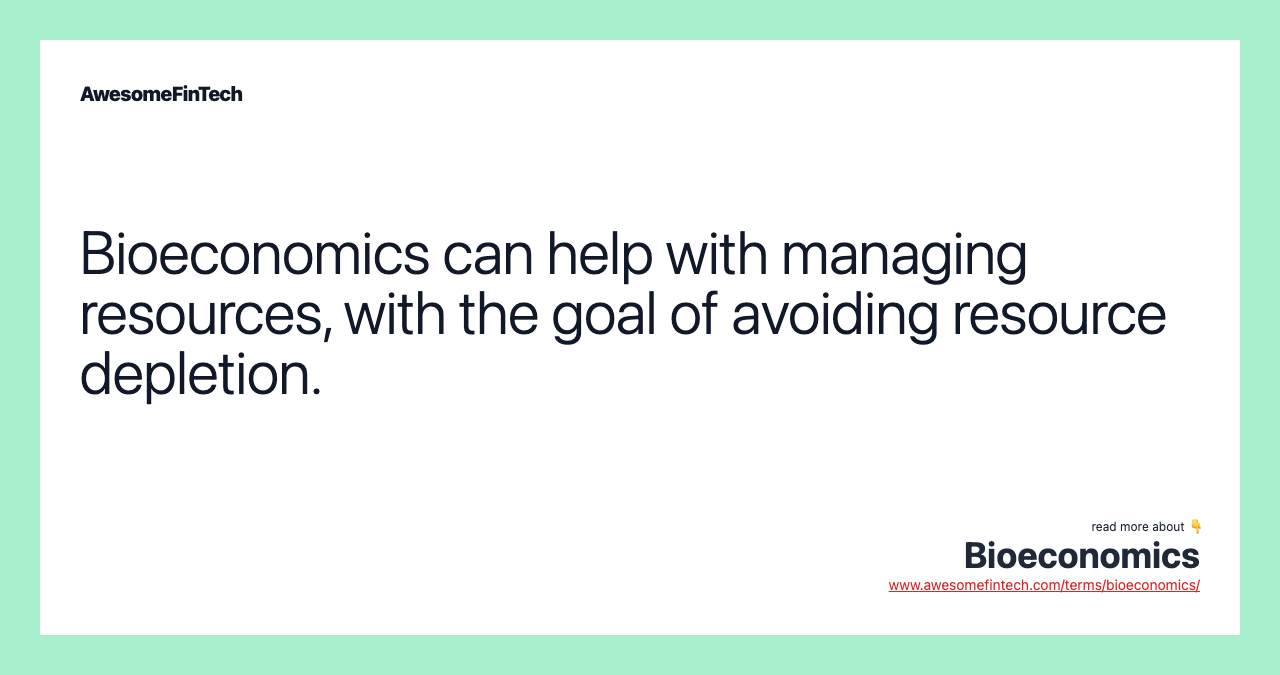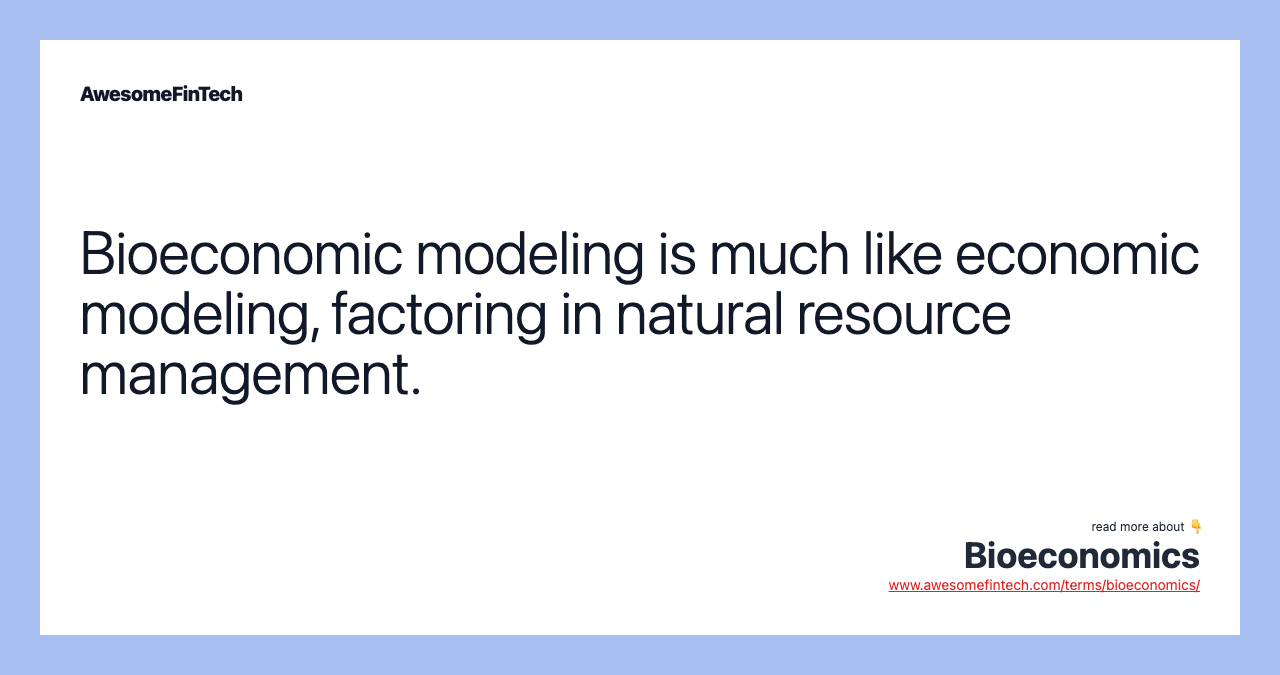Bioeconomics
Bioeconomics is a progressive branch of social science that seeks to integrate the disciplines of economics and biology for the sole purpose of creating theories that do a better job of explaining economic events using a biological basis and vice versa. Bioeconomics is a progressive branch of social science that seeks to integrate the disciplines of economics and biology for the sole purpose of creating theories that do a better job of explaining economic events using a biological basis and vice versa. With the help of modeling, bioeconomics can help determine optimal natural resource usage. Ultimately, extinction or resource depletion is driven by a low natural growth rate, high price-cost ratio, and high opportunity cost. Bioeconomic modeling is much like economic modeling, factoring in natural resource management.

More in Economy
What Is Bioeconomics?
Bioeconomics is a progressive branch of social science that seeks to integrate the disciplines of economics and biology for the sole purpose of creating theories that do a better job of explaining economic events using a biological basis and vice versa.



Understanding Bioeconomics
The proponents of bioeconomics believe that the same patterns that can be seen in biological evolution can be applied to stock market behavior, as many of the same "causal interactions" and "survival elements" can be found there as well as in nature.
In nature, we see groups of different organisms working together to best utilize the resources needed to sustain life, while still promoting a "survival of the fittest" framework. Like behavioral finance and other applied economic schools, bioeconomics is another example of economic theory branching out of classical boundaries and attempting to better explain the complex economies of today.
Still, the idea of finding the best utilization of biological resources for the economy is nothing new. Bioeconomics can help with managing resources, with the goal of avoiding resource depletion. Managing natural resources can be done with bioeconomics. The practice involves figuring out the best way to manage socioeconomic behavior sustainably.
Modeling Bioeconomics
Bioeconomic modeling is much like economic modeling, factoring in natural resource management. With the help of modeling, bioeconomics can help determine optimal natural resource usage. This includes agriculture's impact on water availability or other factors. In many cases, modeling can help determine potential pitfalls that might be overlooked or misunderstood.
The most notable use of bioeconomics and modeling is looking at the exploitation of marine life. This includes calculating optimal harvesting and activity over time. To determine exploitation, the three key factors include natural growth rate, price-cost ratio, and opportunity cost. Ultimately, extinction or resource depletion is driven by a low natural growth rate, high price-cost ratio, and high opportunity cost.
Bioeconomics Example
A company is contemplating filling in a mangrove to build a strip mall near a residential area. From an economics standpoint, the company explores the money and resources needed to convert the mangrove into usable land and then comparing that to expected cash flows from the mall.
From a bioeconomics standpoint, the company would not only look at the supply and demand but also gauge the biological and environmental impact of such a move. That is, the mangrove is home to many plants and animals, including fish that eat algae. With the stock market, supply and demand drive the economic theory. However, bioeconomics considers the survival instinct aspect, factoring in resource depletion and utilization.
Related terms:
Austrian School
The Austrian school is an economic school of thought that originated in Vienna during the late 19th century with the works of Carl Menger. read more
Economics : Overview, Types, & Indicators
Economics is a branch of social science focused on the production, distribution, and consumption of goods and services. read more
Evolutionary Economics
Evolutionary economics proposes that economic processes evolve and are determined both by individuals and society as a whole. read more
Inflation
Inflation is a decrease in the purchasing power of money, reflected in a general increase in the prices of goods and services in an economy. read more
Neuroeconomics
Neuroeconomics aims to link economics, psychology, and neuroscience to better understand economic decision-making. read more
Predictive Analytics
Predictive analytics is the use of statistics and modeling techniques to determine future performance based on current and historical data. read more
Social Sciences
Social sciences are a group of academic disciplines that examine society and how people interact and develop as a culture. read more
Stock
A stock is a form of security that indicates the holder has proportionate ownership in the issuing corporation. read more
Stock Market
The stock market consists of exchanges or OTC markets in which shares and other financial securities of publicly held companies are issued and traded. read more
Thorstein Veblen
Thorstein Veblen was an American economist best known for coining the term "conspicuous consumption," which appeared in his book "The Theory of the Leisure Class." read more